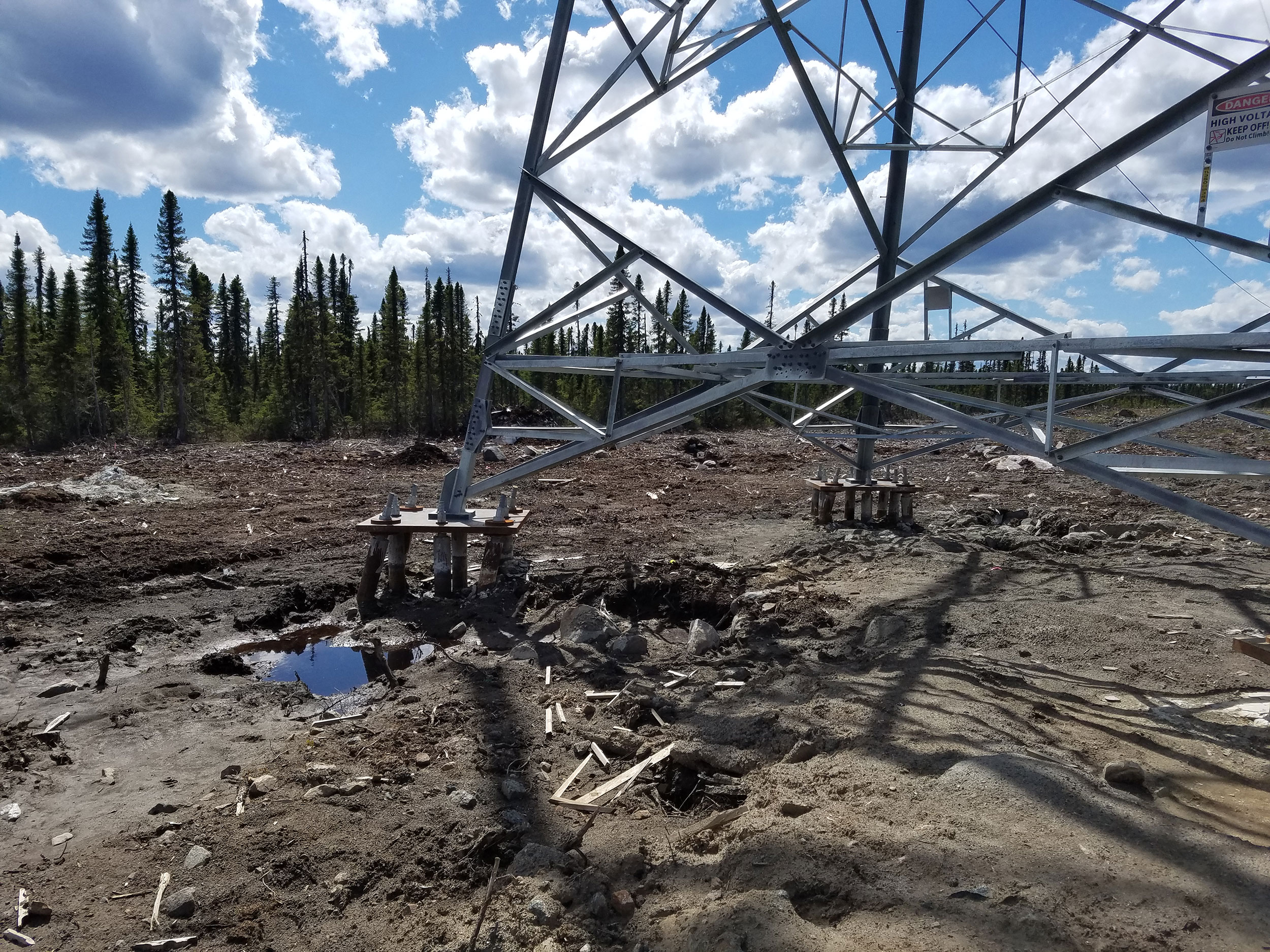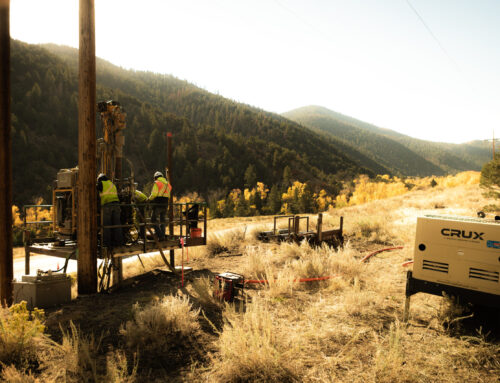
Micropile Design & Construction
The Lower Churchill Project is intended to develop the hydroelectric potential of the Churchill River. Phase I, referred to as Muskrat Falls, includes more than 800 miles of high voltage transmission line through the remote, rugged terrain of Newfoundland and Labrador, Canada.
Team Members
Nalcor Energy
Valard
Crux Subsurface
Crux’s Role
Original foundation designs for the alignment included grillage and driven piles, but variable bedrock depths and boggy ground conditions created installation challenges. Crux was engaged to provide a design-build micropile alternative at select structure locations, the number of which continued to expand throughout the project.
Designs were developed for both self-supporting and guyed structures, and factored in bog up to 25 feet as well as variable bedrock quality. The construction approach provided a flexible solution that could be adapted onsite if geotechnical conditions differed from expectations. In total, Crux designed and installed micropile foundations for 161 structures to depths of up to 70 feet.
Site access in the remote, rugged terrain presented challenges to the project, and access roads were constructed across the alignment. During the winter months, the frozen ground provided sufficient support for equipment traveling off the access roads. During the remaining seasons, rig mats were used onsite to support equipment.
Additional challenges included working in temperatures close to -40°C/-40°F. To mitigate this, all equipment included an on-board heating system and insulation; a heated pressure washer was used to clean the drill at the end of each shift; all-thread bar and hardware required heating to above 5°C/41°F prior to installation; and an insulated blanket was wrapped around the grouted piles to protect fresh grout from freezing.







